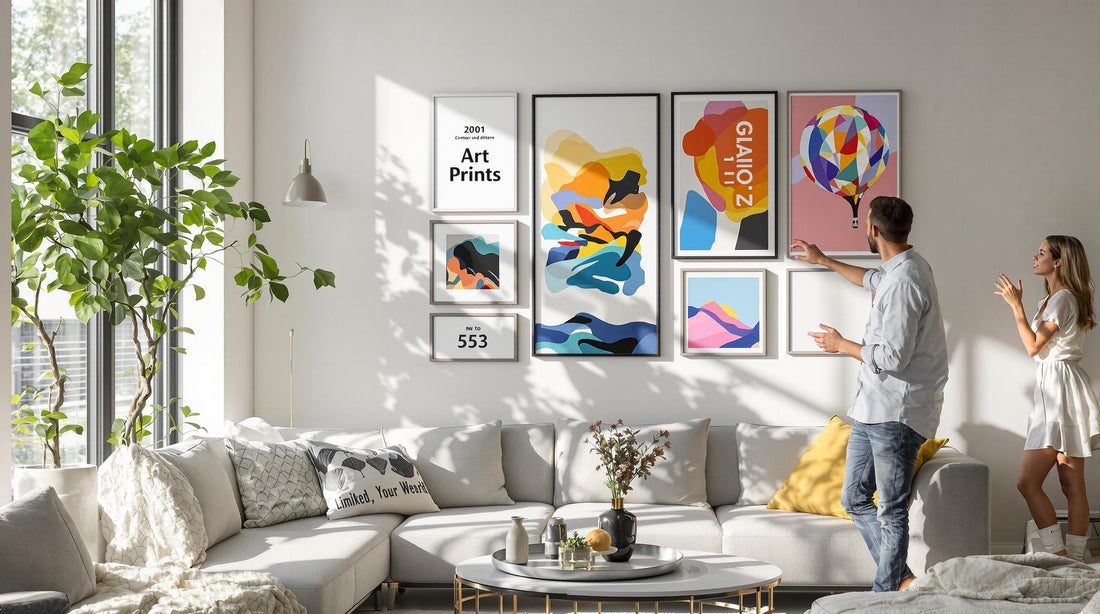
Types of Art Prints: Your Guide for Collectors and Decorators 2025
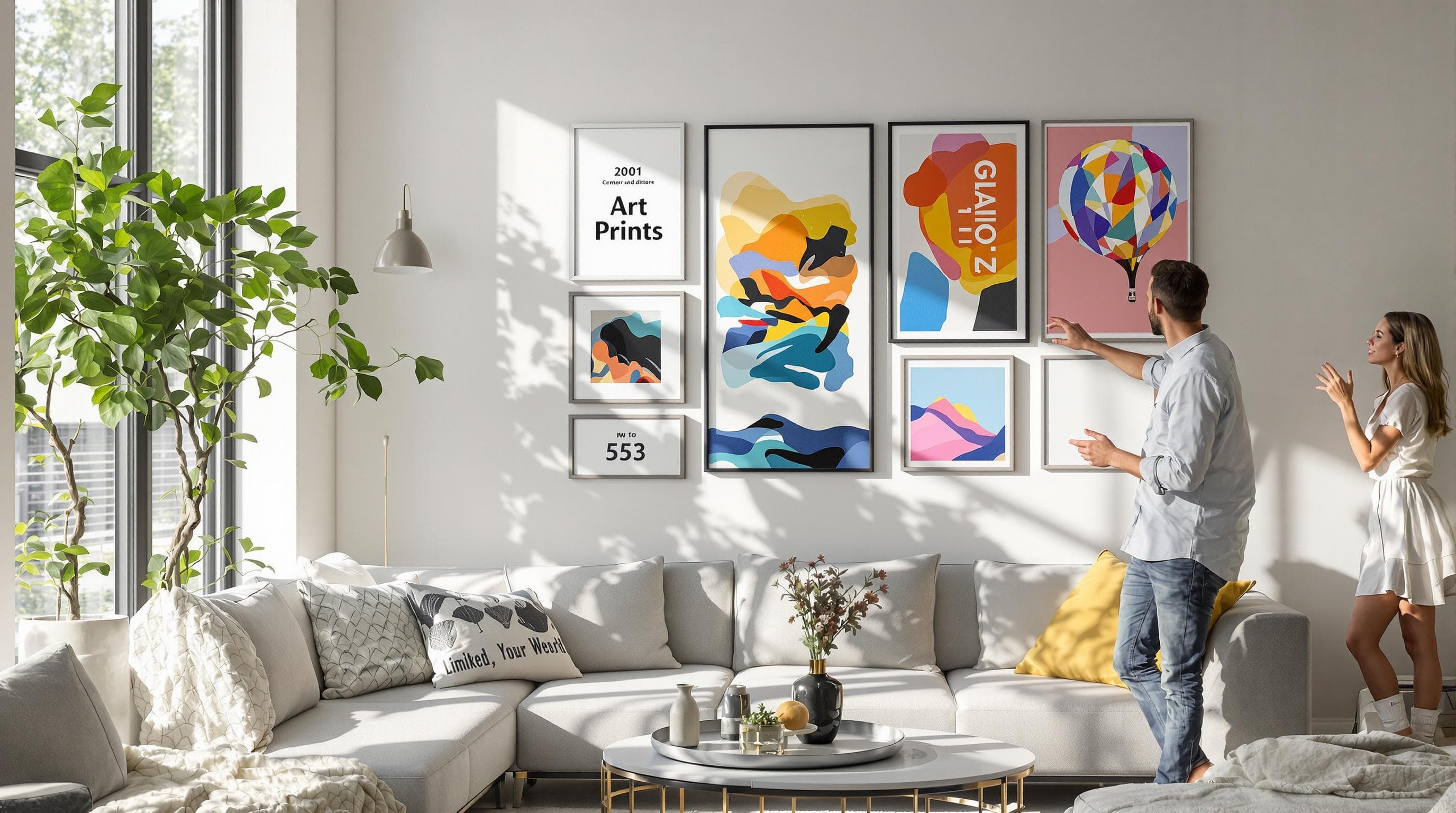
Art prints keep transforming modern interiors and collectors’ walls. There are over a dozen printmaking methods, each with its own history and unique look. Yet many people still think a print is just a cheap poster or simple copy. The surprise is that some art prints—especially rare limited editions—can be more valuable and technically complex than original paintings. Get ready to rethink what you know about collecting and decorating with prints.
Table of Contents
- Different Types Of Art Prints Explained
- How To Choose The Right Art Print For Your Space
- Comparing Canvas, Paper, And Luxury Art Prints
- Tips For Buying Art Prints From Independent Artists
Quick Summary
| Takeaway | Explanation |
|---|---|
| Understand Different Printing Techniques | Familiarize yourself with relief, intaglio, lithography, and digital printing to appreciate the unique qualities and characteristics each method offers in art prints. |
| Consider Room Dynamics for Art Selection | Evaluate your space’s specific characteristics and purpose to choose art prints that harmonize with the environment and enhance the overall aesthetic. |
| Evaluate Medium Differences | Recognize the distinctions between canvas, paper, and luxury art prints to select a medium that fits your desired artistic expression and durability preferences. |
| Prioritize Authenticity in Purchases | When buying prints from independent artists, look for signed and numbered limited editions to ensure legitimacy and increase potential value as collectibles. |
| Support Independent Artists | Engage with and invest in independent artists by understanding their work and contributing to the creative ecosystem that fosters unique artistic narratives and expressions. |
Different Types of Art Prints Explained
Art prints represent a fascinating world of artistic reproduction, offering collectors and decorators multiple techniques for acquiring and displaying artwork. Understanding the various types of art prints enables enthusiasts to make informed decisions about purchasing and appreciating these unique visual expressions.
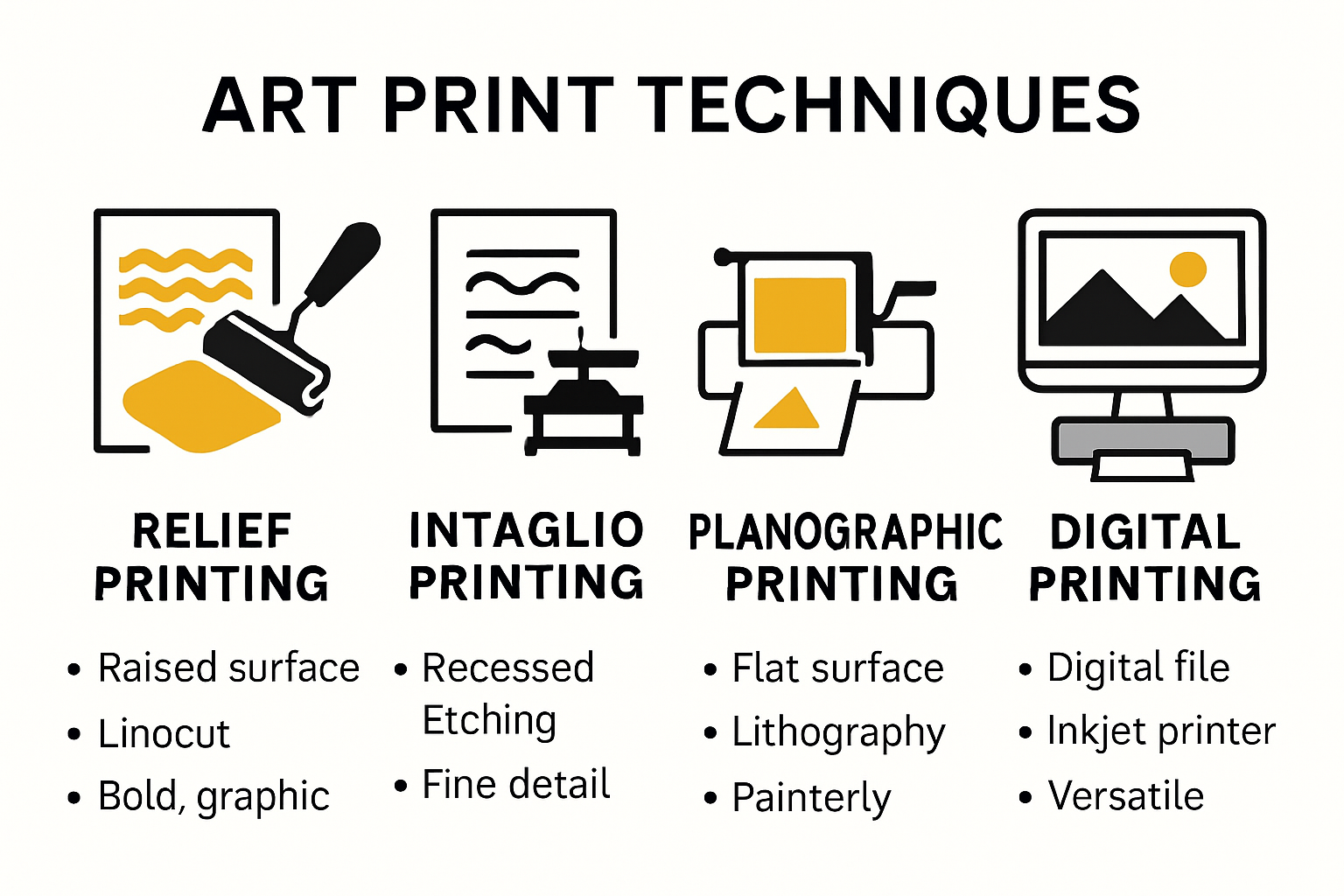
Relief and Intaglio Printing Techniques
Relief printing stands as one of the most ancient art print methods. Artists create images by carving away portions of a matrix, typically using wood, linoleum, or metal surfaces. According to The Metropolitan Museum of Art, this technique involves applying ink to raised areas and pressing paper onto the surface, transferring intricate designs. Woodcut and linocut represent classic examples of relief printing, where artists carefully remove material to create negative spaces that define the final image.
Intaglio printing offers a contrasting approach to art print creation. In this method, artists incise images into metal plates using specialized tools or acid etching techniques. Printmaking experts explain that ink is carefully applied to fill recessed lines, with the plate surface wiped clean before pressing damp paper against it. This process transfers ink from grooved areas, producing detailed and textured prints with remarkable depth and precision.
Planographic and Contemporary Printing Methods
Lithography represents a revolutionary planographic printing technique that relies on the fundamental principle of oil and water repulsion. Artists draw images using greasy substances on flat stone or metal plates. When treated properly, these surfaces allow ink to adhere only to drawn areas while repelling it from non image regions. Smithsonian Institution notes that this method enables artists to create complex, nuanced prints with exceptional detail and tonal range.
Modern technology has expanded print reproduction possibilities dramatically. Digital printing techniques now allow artists to create high resolution reproductions that capture intricate details with remarkable accuracy. Learn more about our canvas art collections to explore how contemporary printing methods have transformed art accessibility.
Each printing technique offers unique characteristics that impact the final artwork. Relief prints showcase bold, graphic qualities. Intaglio methods provide extraordinary textural depth. Lithography enables subtle tonal variations. Digital printing delivers precise color reproduction. Understanding these differences empowers art collectors to appreciate the technical skill and creative vision behind every print they acquire.
Whether you are a seasoned collector or a design enthusiast exploring wall decor options, recognizing the nuanced world of art prints opens up exciting possibilities for personal expression and aesthetic appreciation.
To help readers compare the main traditional and contemporary printmaking methods described above, here’s a side-by-side summary table of their core features.
| Printing Method | Key Process | Surface/Material | Visual Features | Examples |
|---|---|---|---|---|
| Relief | Ink on raised areas | Wood, Linoleum | Bold, graphic lines, strong contrasts | Woodcut, Linocut |
| Intaglio | Ink in incised grooves | Metal plates | Fine detail, textural depth | Etching, Engraving |
| Lithography | Oil & water repulsion (planographic) | Stone, Metal plate | Nuanced tones, soft gradations | Stone lithographs |
| Digital Printing | High-res digital inkjet or laser | Paper, Canvas | Accurate color, detailed reproductions | Giclée prints |
How to Choose the Right Art Print for Your Space
Selecting the perfect art print transforms a living space from ordinary to extraordinary. Art is not just a decorative element but a powerful expression of personal style, mood, and aesthetic sensibility. Understanding how to choose the right art print requires careful consideration of multiple factors that go beyond simple visual appeal.
Understanding Room Dynamics and Artwork Harmony
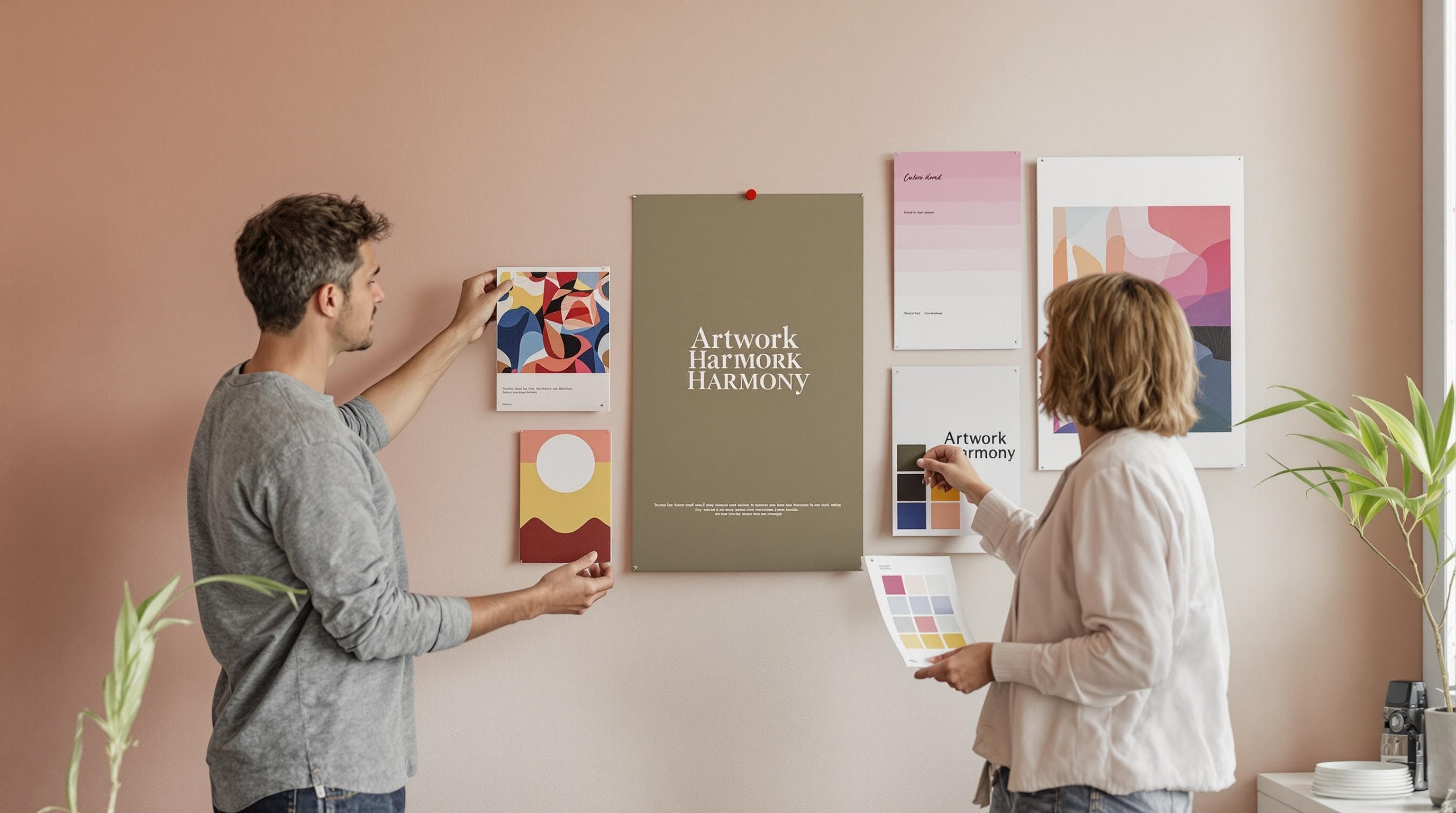
The foundation of selecting an art print lies in comprehending your space’s unique characteristics. According to Home & Gardens Magazine, each room serves a distinct purpose, and the artwork should reflect and enhance that function. A bedroom might benefit from serene, calming pieces that promote relaxation, while a living room could feature more dynamic, conversation-starting artwork that energizes the environment.
Color coordination plays a crucial role in artwork selection. Experts recommend choosing prints that either complement or strategically contrast with your existing color palette. This doesn’t mean matching colors exactly, but creating a visual dialogue between the artwork and the room’s existing design elements. For instance, a minimalist space might come alive with a bold, vibrant print that introduces unexpected color and energy.
Scale, Proportion, and Visual Impact
Proportion is a critical yet often overlooked aspect of art print selection. Design experts suggest that artwork should occupy approximately two-thirds the width of the furniture beneath it. This guideline ensures visual balance and prevents the art from appearing either overwhelmingly large or disappointingly small.
Consider the architectural elements of your space. High ceilings can accommodate larger, more dramatic pieces, while smaller rooms might require more delicate, compact artworks. Check out our curated living room art collection for inspiration on how to match art prints with different room configurations.
Personal Connection and Emotional Resonance
Beyond technical considerations, the most important factor in choosing an art print is personal connection. An artwork should speak to you, evoke emotions, or tell a story that resonates with your individual experience. Whether it’s a landscape that reminds you of a cherished travel memory, an abstract piece that captures a particular mood, or a portrait that inspires you, the emotional impact of the artwork is paramount.
Don’t be afraid to mix styles and mediums. A contemporary space can be beautifully enhanced by a traditional print, and vice versa. The key is to create a curated look that reflects your personality and creates visual interest.
Remember that art is subjective. While design principles provide guidance, the ultimate decision rests on what makes you feel inspired, comfortable, and connected to your living space. Take your time, explore different options, and trust your instincts when selecting art prints that will transform your home into a personalized sanctuary of visual expression.
Comparing Canvas, Paper, and Luxury Art Prints
Art print selection involves understanding the unique characteristics of different mediums. Each print type offers distinct aesthetic qualities, durability, and visual impact that can dramatically transform your living space and artistic experience.
Below is a comparison table outlining the unique qualities, maintenance requirements, and ideal uses for canvas, paper, and luxury art prints described in this section.
| Print Type | Main Characteristics | Maintenance/Framing | Ideal For |
|---|---|---|---|
| Canvas | Textured depth, durable, painterly effect | Can be displayed frameless | Modern decor, landscapes, abstracts |
| Paper | Sharp detail, color precision, smooth surface | Needs professional framing | Photography, detailed artworks |
| Luxury | Premium materials, limited edition, exclusive | Often custom framing, certified | Collectors, high-end display, investments |
Canvas Prints: Texture and Durability
Canvas prints represent a popular choice for contemporary art collectors and interior designers. According to PetaPixel, these prints are renowned for their exceptional durability and resistance to environmental factors like UV light and humidity. The textured surface of canvas adds remarkable depth and a painterly effect, particularly enhancing artworks such as landscapes and abstract compositions.
The inherent strength of canvas prints means they can be displayed without traditional framing, offering a modern, streamlined aesthetic. Learn more about canvas print essentials to understand how this medium can elevate your art collection.
Paper Prints: Precision and Detail
Paper prints excel in delivering extraordinary detail and color accuracy. Professional photographers and art collectors often prefer fine art paper prints for their ability to capture intricate nuances and sharp visual elements. PetaPixel highlights that the smooth surface of paper prints allows for more precise color reproduction and crisp details.
However, paper prints require more careful handling and protection. They typically need professional framing with UV-protective glass to prevent degradation from sunlight and environmental factors. This additional protection can add to the overall cost but ensures the longevity and preservation of delicate artworks.
Luxury Art Prints: Premium Quality and Exclusivity
Luxury art prints represent the pinnacle of artistic reproduction, combining superior materials, advanced printing techniques, and often limited edition status. These prints go beyond standard reproduction, utilizing high end substrates, specialized inks, and meticulous production processes that elevate them from mere decorative objects to collectible art pieces.
When selecting a luxury print, consider factors like print run size, artist certification, material quality, and provenance. Some luxury prints incorporate unique elements like hand embellishments, specialized archival papers, or signature authentication that distinguish them from mass produced alternatives.
Understanding the nuanced differences between canvas, paper, and luxury prints empowers art enthusiasts to make informed decisions. Each medium offers unique advantages that cater to different aesthetic preferences, functional requirements, and budget considerations.
Whether you are drawn to the textured depth of canvas, the precise details of paper prints, or the exclusive nature of luxury art prints, your choice should ultimately reflect your personal style, the specific artwork, and the intended display environment. Take time to explore and appreciate the distinctive qualities of each print type, allowing your selection to become a true expression of your artistic sensibility.
Tips for Buying Art Prints from Independent Artists
Supporting independent artists through art print purchases represents more than a transaction—it’s an opportunity to invest in creativity, individual expression, and emerging talent. Navigating the world of independent art prints requires thoughtful consideration, research, and an appreciation for artistic authenticity.
Authenticating and Valuing Limited Edition Prints
Authenticity is paramount when purchasing art prints from independent artists. According to Art Collectors Program, collectors should prioritize prints that are signed and numbered by the artist, typically in pencil. This practice confirms the print’s legitimacy and establishes its limited edition status, which significantly influences its potential value and collectibility.
Edition size plays a crucial role in determining a print’s potential appreciation. Experts recommend being cautious of large edition sizes, suggesting that prints from editions exceeding 500 are less likely to retain unique value over time. Smaller edition sizes often indicate greater artistic exclusivity and potential collector interest.
Understanding Print Types and Artistic Techniques
Discerning between original fine art prints and mere reproductions is essential for informed purchasing. Art authentication experts emphasize that original fine art prints are created through specific printmaking processes, distinguishing them from photographic copies of existing artworks. Each printmaking technique—whether relief, intaglio, or lithographic—represents a distinct artistic method with its own intrinsic value.
When exploring independent artists’ work, examine the print’s provenance, technical execution, and the artist’s creative approach. Look for prints that demonstrate technical mastery, innovative technique, and a unique artistic vision. Explore our curated artist collections to discover emerging talents and distinctive artistic expressions.
Building Relationships and Supporting Creative Ecosystems
Buying art prints from independent artists extends beyond acquiring a visual artifact—it’s about participating in a broader creative ecosystem. Each purchase directly supports an artist’s ongoing creative journey, enabling them to continue producing innovative work. Consider the artist’s background, artistic philosophy, and the narrative behind their creations.
Research the artist’s portfolio, exhibition history, and critical reception. Attend local art shows, online exhibitions, and emerging artist platforms to discover talented individuals whose work resonates with your aesthetic sensibilities. Engage with artists through social media, artist statements, and personal interactions to gain deeper insights into their creative process.
Remember that collecting art prints is a personal journey. Trust your instincts, appreciate the unique story each print tells, and view your purchase as an investment in both artistic expression and individual creativity. By supporting independent artists, you contribute to a vibrant, diverse artistic landscape that celebrates individual vision and innovative storytelling.
Whether you are a seasoned collector or a newcomer to art appreciation, approaching independent art print purchases with curiosity, respect, and informed discernment will enrich your collecting experience and support the broader artistic community.
Frequently Asked Questions
What are the different types of art prints?
Art prints can be categorized into several types based on the printing techniques used, including relief prints, intaglio prints, lithographs, and digital prints. Each method produces distinct visual qualities and textures.
How do I choose the right art print for my space?
When selecting an art print, consider the room’s purpose, existing color scheme, scale, and your personal connection to the piece. Aim for harmony between the artwork and the surrounding decor to enhance the overall aesthetic.
What is the difference between canvas, paper, and luxury art prints?
Canvas prints are textured and durable, ideal for modern decor. Paper prints deliver sharp detail and color accuracy, requiring careful framing. Luxury prints are exclusive, often limited editions that utilize premium materials and reflect higher value.
How can I buy art prints from independent artists?
To purchase from independent artists, verify the print’s authenticity by seeking signed and numbered editions. Research the artist’s work and engage with them to understand their creative philosophy, enhancing your collecting experience.
Bring Your Art Print Knowledge to Life with Unique Canvas Collections
You have just explored the world of art prints and learned how different printing methods, materials, and styles impact your collection and interior design. Maybe you are seeking the right print for your space, want to showcase personal taste, or desire a collectible that stands out. At Marta Ellie, we make it simple to turn this inspiration into a reality. Explore Music Festival Wall Art Under $350 – Exclusive Canvas Art if you want to add energy and color to your living room, or discover Lake House Weekend Retreat Art – Exclusive Canvas Art for tranquil, nature-inspired settings. Each print is carefully crafted and expresses Marta Ellie’s commitment to quality and originality.
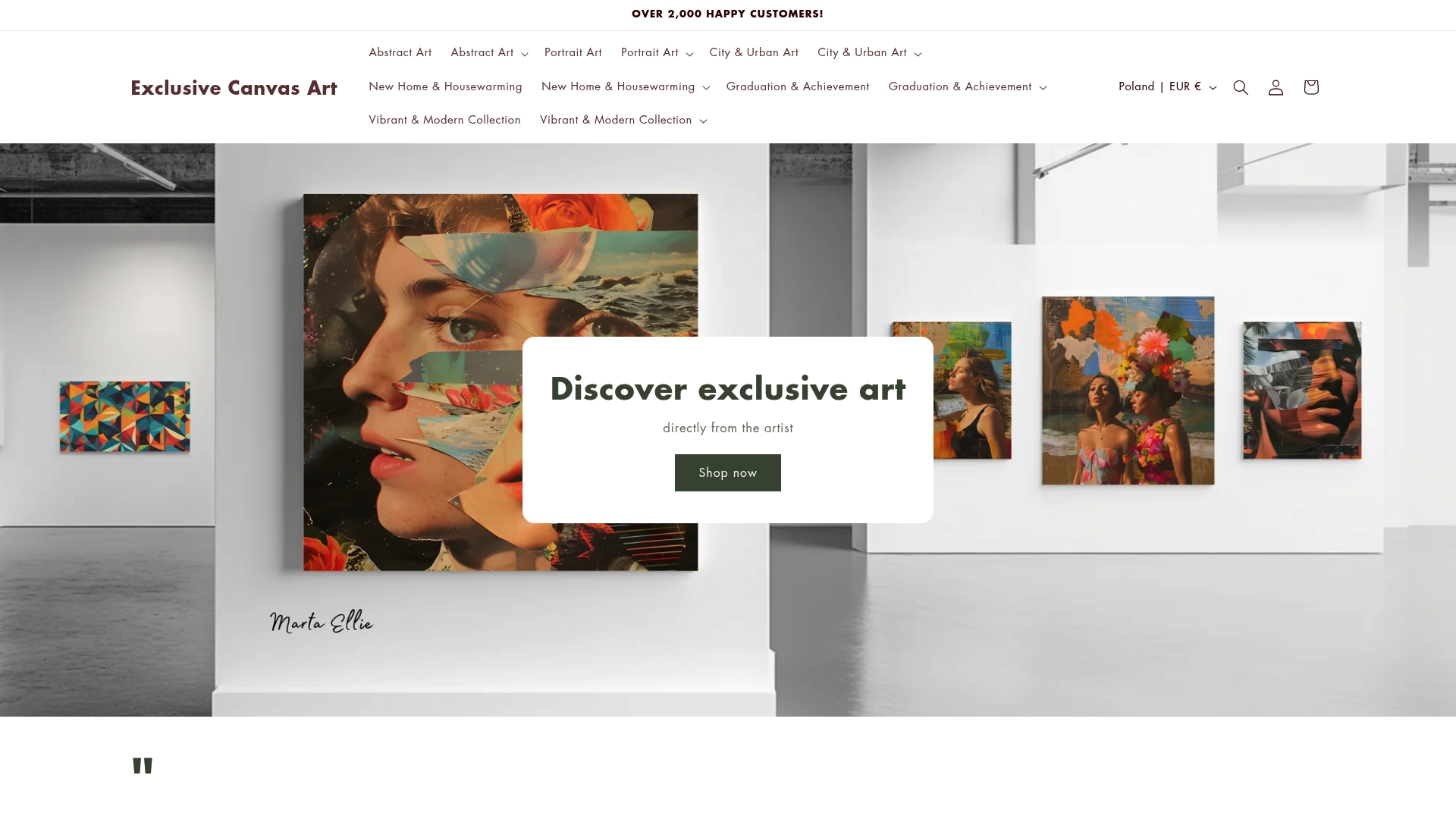
Do not let your new art knowledge gather dust. Elevate your home and collection with a canvas print that truly reflects your style and passion for authentic art. Visit MartaEllie.com now to discover limited edition pieces, select your favorite size, and start building a wall that tells your story. With new collections and secure worldwide shipping, now is the perfect time to invest in the art you love.
Recommended
- Contemporary vs Modern Art: Guide for Collectors & Decorators 2025 – Exclusive Canvas Art
- Framing Art Prints Guide 2025: Expert Tips for Modern Decor – Exclusive Canvas Art
- How to Choose Art for Living Room Walls: 2025 Guide – Exclusive Canvas Art
- Living Room Wall Art Trends 2025: Modern Canvas and Print Ideas – Exclusive Canvas Art
- Large Format vs Small Format Printing: London 2025 Guide - PromoSigns.co.uk
- Acrylic Wedding Art Ideas for Unique 2025 Celebrations – Live Wedding Painters